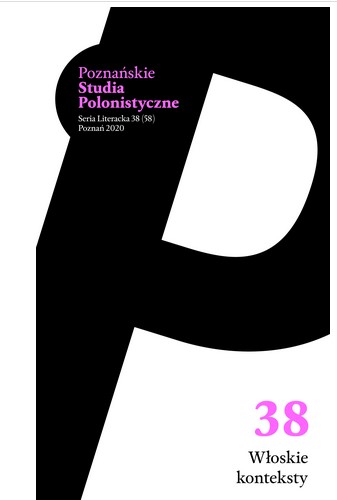„Wędrowiec-dantofil” w rodzinnej Italii. Stanisław Vincenz a włoska tradycja artystyczna
“Traveller-dantophile” in Home Italy. Stanisław Vincenz and the Italian Artistic Tradition
Author(s): Jakub Żmidziński Subject(s): Cultural history, Customs / Folklore, Architecture, Visual Arts, Polish Literature, Theory of Literature, History of Art
Published by: Wydawnictwo Poznańskie Studia Polonistyczne
Keywords: Stanisław Vincenz; Italy; Naples; Venice; Dante;
Summary/Abstract: The article is the first attempt at a holistic view of Stanisław Vincenz’s relationship with Italian culture. Since his youth, Vincenz would visit the Italian Peninsula travelling to Venice and, already as an emigrant after World War II, made a few visits to Naples and Tuscany. These journeys resulted in numerous comments included in his essays on Dante Alighieri, as separate overview Z perspektywy podróży (From a traveller’s perspective) and List z Neapolu. Dialog z Czesławem Miłoszem (A letter from Naples. A dialogue with Czesław Miłosz). Italian journeys, interest in Dante and Italian culture (architecture, painting, folk rituals) brought numerous Italian motifs in the tetralogy Na wysokiej połoninie (On a high mountain pasture). The key element is included in volume II, Zwada (Conflict), which describes a group of loggers cutting down trees in a primeval Carpathian forest. In this part, a young Italian dies and is buried after a Hutsul funeral ritual which is not understood by the foreigners. The analysis of the abovementioned motifs shows how important Italian culture was to Vincenz, also in a very personal sense, given the Vincenz family’s distant Venetian roots. One may even claim that for the writer, Italy was almost a family land. Personifying the European spirit, Italy was his “broader” homeland.
Journal: Poznańskie Studia Polonistyczne. Seria Literacka
- Issue Year: 2020
- Issue No: 38
- Page Range: 77-102
- Page Count: 26
- Language: Polish

